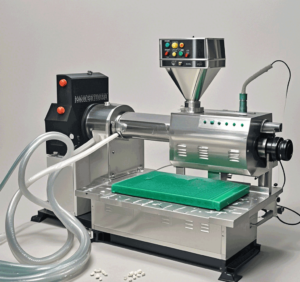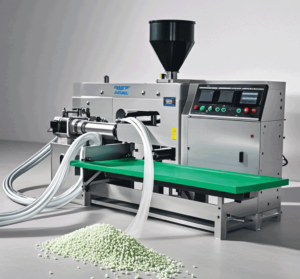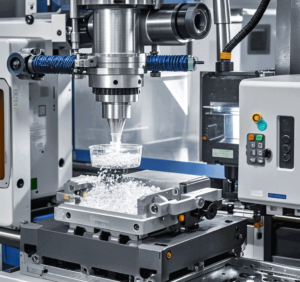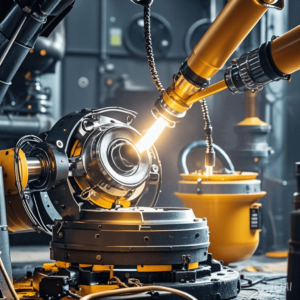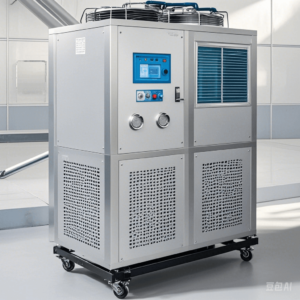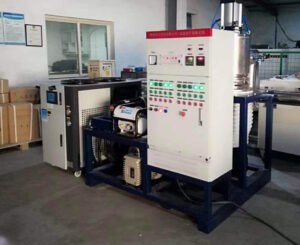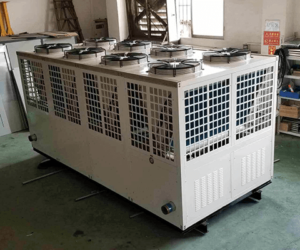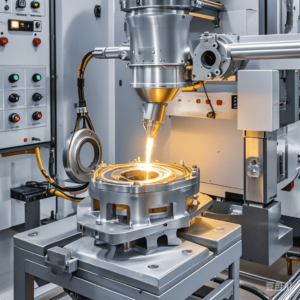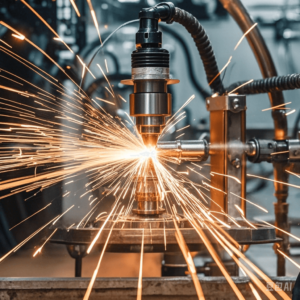Are you tired of sweltering temperatures ruining your swimming pool experience? Look no further – o guia definitivo para escolher o refrigerador de água perfeito para sua piscina está aqui! Quer você seja proprietário de uma casa ou profissional de manutenção de piscinas, encontrar o refrigerador de água certo é essencial para manter aquele mergulho refrescante durante todo o ano. Neste guia completo, orientaremos você nos principais fatores a serem considerados ao selecionar um resfriador de água que atenda às suas necessidades. Desde o tamanho e capacidade até a eficiência energética e requisitos de instalação, não deixamos pedra sobre pedra. Compreendemos que encontrar o refrigerador de água perfeito pode ser cansativo, mas não tema! Com nossa consultoria especializada e insights do setor, você terá todas as ferramentas necessárias para tomar uma decisão informada. Prepare-se para mergulhar num mundo de eficiência de refrigeração incomparável e transformar a sua piscina num oásis fresco. Diga adeus à água superaquecida e diga olá às intermináveis horas de diversão na natação. Vamos começar!
Importância de um refrigerador de água para piscinas
Um refrigerador de água não é apenas um luxo para proprietários de piscinas; tornou-se uma necessidade em regiões onde a temperatura aumenta durante os meses de verão. A principal função de um refrigerador de água é diminuir a temperatura da água da piscina, tornando-a mais confortável para nadar. Quando a temperatura da água sobe acima de um determinado nível, pode tornar-se pouco convidativa e até insegura para os nadadores. As altas temperaturas podem levar ao crescimento de bactérias e algas, criando um perigo para a saúde e necessitando de limpeza e tratamentos químicos mais frequentes. Ao investir num refrigerador de água, você garante um ambiente de natação seguro e agradável para a família e amigos durante os meses quentes.
Além disso, o conforto de nadar em águas mais frias não pode ser exagerado. Imagine entrar em uma piscina que parece um oásis refrescante, em vez de um banho quente. Um refrigerador de água permite manter a sua piscina a uma temperatura confortável, melhorando a experiência geral de natação. Isto é especialmente importante para famílias com crianças ou indivíduos que gostam de nadar para fazer exercícios. Uma temperatura consistente da água pode estimular o uso mais frequente da piscina, proporcionando benefícios à saúde e um espaço recreativo divertido.
Além disso, uma piscina bem conservada e com água mais fria também pode aumentar a longevidade dos materiais e equipamentos da sua piscina. As altas temperaturas da água podem levar ao aumento das taxas de evaporação, o que pode causar desequilíbrios químicos e danos às superfícies e acessórios da piscina. Ao regular a temperatura da água, os chillers ajudam a preservar a integridade da sua piscina, poupando-lhe dinheiro em reparações e manutenção a longo prazo. Como tal, um refrigerador de água é um investimento que compensa em conforto, segurança e longevidade da sua piscina.
Diferentes tipos de refrigeradores de água
Quando se trata de refrigeradores de água, existem vários tipos disponíveis, cada um projetado para atender a diferentes tamanhos de piscinas e padrões de uso. Os tipos mais comuns incluem resfriadores resfriados a ar, resfriadores resfriados a água e resfriadores com bomba de calor. Os chillers resfriados a ar são a opção mais comum para piscinas residenciais. Eles funcionam aspirando o ar, resfriando a água por meio de um ciclo de refrigerante e, em seguida, expelindo o ar quente de volta ao ambiente. Esses chillers são relativamente fáceis de instalar e manter, o que os torna uma escolha popular entre os proprietários.
Os chillers refrigerados a água, por outro lado, utilizam água de uma fonte externa, como um poço ou rio, para resfriar a água da piscina. Embora sejam geralmente mais eficientes do que os modelos refrigerados a ar, requerem uma instalação mais complexa e podem não ser práticos para todos os proprietários. Esses chillers são frequentemente usados em ambientes comerciais ou piscinas residenciais maiores, onde a eficiência é fundamental e o investimento inicial pode ser justificado por custos operacionais mais baixos.
Heat pump chillers are another option, functioning similarly to air conditioners by extracting heat from the pool water and releasing it outside. They are highly energy-efficient and can be used for both heating and cooling purposes. However, they perform best in moderate climates, as their efficiency diminishes in extremely hot or cold weather. Understanding the differences between these types of chillers is essential for making an informed decision that aligns with your specific pool needs and local climate conditions.
Factors to consider when choosing a water chiller for your swimming pool
Choosing the right water chiller for your swimming pool involves careful consideration of several key factors. One of the most crucial aspects is the size of your pool. The cooling capacity of a chiller is measured in BTUs (British Thermal Units), and it is essential to select a model that can effectively cool the volume of water in your pool. A chiller that is too small will struggle to maintain the desired temperature, while one that is excessively large will lead to higher energy costs and inefficient operation.
Outro fator a considerar é o clima da sua região. Se você mora em uma região com temperaturas extremas, pode precisar de um sistema mais robusto que aguente o calor. Além disso, considere com que frequência você usa sua piscina e durante quais estações. Por exemplo, se você planeja nadar com frequência no verão, pode valer a pena investir em um refrigerador de alta capacidade. Por outro lado, se as suas temporadas de natação forem limitadas, uma unidade menor pode ser suficiente.
Os requisitos de instalação também desempenham um papel significativo no seu processo de tomada de decisão. Alguns chillers requerem configurações elétricas específicas ou encanamento adicional, o que pode aumentar os custos de instalação. É essencial consultar um profissional para avaliar a configuração atual da sua piscina e determinar quais modificações, se houver, são necessárias para uma nova instalação do chiller. Levando em consideração esses fatores – tamanho da piscina, clima, uso e requisitos de instalação – você pode restringir suas opções e encontrar o refrigerador de água perfeito para suas necessidades.
Dimensionando seu refrigerador de água corretamente
O dimensionamento adequado do seu refrigerador de água é vital para um desempenho ideal e eficiência energética. O primeiro passo no dimensionamento é calcular o volume da sua piscina em galões. Para fazer isso, você pode usar a fórmula: comprimento × largura × profundidade média × 7,5. Este cálculo lhe dará a capacidade total de galões da sua piscina, o que é essencial para determinar a classificação de BTU apropriada para o seu resfriador. Geralmente, uma boa regra é ter um resfriador que possa remover 1 BTU por galão de água por hora para cada grau Fahrenheit que você deseja reduzir a temperatura.
For example, if your pool holds 20,000 gallons of water and you want to cool it from 85°F to 78°F, you need to remove 7 degrees of heat. Therefore, you would require a chiller with a cooling capacity of approximately 140,000 BTUs (20,000 gallons × 7 degrees). However, it is also important to consider factors such as the pool’s exposure to sunlight, wind, and usage patterns, as these can affect heat gain and cooling needs.
Additionally, it’s advisable to consult with professionals who can help you analyze your specific situation and ensure that you select a chiller with the correct capacity. Oversizing a chiller can lead to short cycling, which reduces efficiency and increases wear and tear on the unit. Conversely, an undersized chiller will struggle to maintain desired temperatures and could lead to higher energy consumption. Thus, accurate sizing of your water chiller is crucial for achieving a balance between performance and energy efficiency.
Energy efficiency and cost considerations
A eficiência energética é um fator significativo na seleção de um refrigerador de água para a sua piscina. A operação de um chiller pode consumir eletricidade substancial, especialmente durante os meses de pico do verão, quando a demanda é maior. Portanto, é fundamental considerar o Índice de Eficiência Energética (EER) do chiller, que mede a capacidade de refrigeração em relação ao consumo de energia. Um EER mais elevado indica uma unidade mais eficiente em termos energéticos, o que pode levar a contas de electricidade mais baixas ao longo do tempo.
Além disso, o preço inicial de compra do chiller é apenas uma parte da equação geral de custos. É crucial considerar os custos operacionais a longo prazo associados ao funcionamento do chiller. Unidades que podem ter um custo inicial menor podem acabar sendo mais caras no longo prazo se forem menos eficientes. Portanto, é aconselhável investir em uma unidade de qualidade que possa ter um custo inicial mais elevado, mas que ofereça melhor eficiência energética e confiabilidade.
Além do próprio chiller, não se esqueça de contabilizar os custos de instalação, despesas de manutenção e quaisquer modificações necessárias na infraestrutura da sua piscina. Estes custos adicionais podem variar significativamente dependendo da complexidade da instalação e do tipo de chiller escolhido. Ao avaliar cuidadosamente os custos iniciais e contínuos, você pode tomar uma decisão mais informada e alinhada ao seu orçamento, garantindo ao mesmo tempo que sua piscina permaneça um retiro refrescante durante todo o verão.
Marcas populares de refrigeradores de água no mercado
Quando se trata de selecionar um refrigerador de água, a marca pode desempenhar um papel significativo na qualidade e confiabilidade da unidade. Algumas das marcas mais conceituadas do mercado incluem AquaCal, Arctic Heat Pumps e Hayward. AquaCal é conhecida por sua ampla gama de bombas de calor e resfriadores eficientes que atendem a aplicações residenciais e comerciais. Suas unidades são frequentemente elogiadas por sua durabilidade e tecnologia inovadora, o que as torna uma escolha popular entre os proprietários.
Arctic Heat Pumps offers a selection of both heating and cooling solutions, focusing on energy efficiency and environmentally-friendly refrigerants. Their models often come with advanced features such as digital controls and smart technology integration, allowing users to optimize their pool’s temperature with ease. The brand has built a solid reputation for reliability and excellent customer service, which is crucial when making such an investment.
Hayward is another well-known brand that provides a variety of pool equipment, including water chillers. They offer efficient models that are designed for easy integration with existing pool systems. Hayward’s chillers are recognized for their advanced technology and user-friendly interfaces, making them a favorite among pool professionals. When considering a chiller, it’s wise to research these brands and read reviews to find the best fit for your specific needs and budget.
Maintaining and servicing your water chiller
Regular maintenance is essential for keeping your water chiller running efficiently and prolonging its lifespan. One of the most critical maintenance tasks is cleaning the chiller’s condenser coils, which can accumulate dirt and debris over time. A dirty coil can significantly reduce the unit’s efficiency and cooling capacity, leading to higher energy costs. It is advisable to inspect and clean the coils at least once a season, or more frequently if you live in a dusty area or have nearby vegetation.
In addition to cleaning the coils, you should also check the water filter regularly and replace it as necessary. A clogged filter can impede water flow and reduce the efficiency of the chiller. Many models come with a removable filter that can be easily cleaned or replaced, making this an easy task for pool owners. Furthermore, it’s essential to monitor the refrigerant levels in the system, as low levels can indicate a leak or other issues that may require professional attention.
Scheduling annual professional servicing is also a wise decision. A qualified technician can perform a comprehensive inspection, identify potential problems, and ensure that your chiller operates at peak performance. Regular servicing not only helps prevent major breakdowns but also keeps your warranty valid, which can save you money in case of repairs. By staying proactive with maintenance and servicing, you can enjoy a reliable and efficient water chiller for many years to come.
Cost of installation and operation
The cost of installing a water chiller can vary widely based on several factors, including the type of chiller selected, the size of your pool, and any necessary modifications to your existing pool setup. On average, homeowners can expect to pay anywhere from $2,000 to $5,000 for the purchase and installation of a residential water chiller. Air-cooled chillers tend to be more affordable than water-cooled units, which often require more extensive plumbing and electrical work.
In addition to installation costs, it’s important to consider the operational costs associated with running a water chiller. These costs primarily include electricity consumption, which can fluctuate based on local energy rates and the efficiency of the chiller. As mentioned earlier, choosing a model with a high EER can significantly reduce energy costs over time. On average, homeowners can expect to spend between $300 and $1,000 annually on electricity for their chiller, depending on usage and local rates.
Additionally, don’t overlook maintenance costs. While regular maintenance can prevent costly repairs, it’s still important to budget for routine servicing, cleaning supplies, and any parts that may need replacement over time. By considering all these factors—installation, operational, and maintenance costs—you can develop a comprehensive budget that encompasses the full lifecycle of your water chiller, ensuring that you are prepared for both the initial investment and ongoing expenses.
Tips for extending the lifespan of your water chiller
Prolongar a vida útil do seu refrigerador de água requer uma combinação de manutenção regular e práticas de uso inteligentes. Uma das maneiras mais simples e eficazes de prolongar a vida útil do seu resfriador é manter a área ao redor da unidade livre de detritos. Certifique-se de que haja fluxo de ar suficiente ao redor do resfriador, pois a restrição do fluxo de ar pode levar ao superaquecimento e reduzir a eficiência. Apare qualquer folhagem ou obstáculos que possam impedir a circulação de ar, especialmente durante os meses mais quentes, quando a unidade está trabalhando mais.
Another tip is to monitor the water chemistry in your pool regularly. Maintaining balanced water chemistry is vital not only for swimmer safety but also for the overall health of your pool equipment. High levels of chlorine or unbalanced pH can lead to corrosion and damage to the chiller, so ensure that you are testing and adjusting your pool’s chemical levels as needed. Using a quality water conditioner can also help protect your equipment from scale buildup and corrosion.
Lastly, consider investing in a chiller cover during the off-season or when the pool is not in use. Covers can protect your unit from the elements, such as rain, snow, and debris, reducing wear and tear. Additionally, if you anticipate not using your pool for an extended period, consult your manufacturer’s instructions for winterizing the chiller to ensure it remains in optimal condition. By following these tips, you can significantly extend the lifespan of your water chiller and maintain its efficiency for years to come.
Conclusion and final thoughts
Escolher o refrigerador de água perfeito para a sua piscina é uma decisão crucial que pode melhorar a sua experiência de natação e prolongar a vida útil do seu equipamento de piscina. Ao compreender a importância de um refrigerador de água, os diferentes tipos disponíveis e os principais fatores a serem considerados durante o processo de seleção, você poderá fazer uma escolha mais informada. Desde o dimensionamento correto do seu chiller até a avaliação da eficiência energética e dos custos, cada decisão desempenha um papel no desempenho geral do seu sistema de refrigeração.
Ao embarcar em sua jornada para selecionar o refrigerador de água ideal, lembre-se de pesquisar marcas populares, planejar os custos de instalação e manutenção e implementar dicas para prolongar a vida útil de sua unidade. Com o refrigerador de água certo, você pode transformar sua piscina em um oásis confortável e agradável durante todo o ano.
In conclusion, whether you’re a seasoned pool owner or a newcomer to the world of pool maintenance, investing in a quality water chiller is a decision that pays off in comfort, safety, and enjoyment. Say goodbye to sweltering temperatures and hello to a refreshing swim every time you dip into your pool. With the information provided in this guide, you are now equipped to make the best choice for your swimming pool needs. Dive in and enjoy the cool waters!

